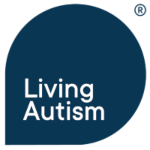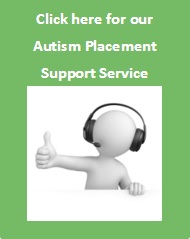The dramatic increase in the number of school-age children identified with autism spectrum disorders (ASD) has created an urgent need to design and implement positive behavioral supports in our schools’ classrooms. Only 3% of children with ASD are identified solely by non-school resources. All other children are identified by a combination of school and non-school resources (57%), or by school resources alone (40%). As a result, schools today face the challenge of providing appropriate services to a diverse and increasingly numerous student population diagnosed with ASD. Unfortunately, educators and service providers are often faced with confusing and conflicting information about the numerous treatments and interventions available for autism.
Although there is no “one size fits all” or single effective intervention, evidence-based strategies such as self-management have shown considerable promise in addressing the attention/concentration difficulties and poor behavioral regulation of students with ASD. According to the National Autism Center’s National Standards Report, Self-management is amongst the interventions or treatments identified in the category of “established” or effective treatments. These strategies involve teaching individuals with ASD to evaluate and record the occurrence/nonoccurrence of a target behavior and secure reinforcement. The objective is to be aware of and regulate their own behavior so they will require little or no assistance from adults.
Defining Self-management
Self-management strategies have been implemented successfully for students with a wide range of academic and behavioral challenges. This group of procedures typically involve the components of self-observation and self-recording, which together comprise self-monitoring. Students are instructed to (a) observe specific aspects of their own behavior and (b) provide an objective recording of these observations. The procedure involves providing a cue or prompt to the student and having he or she determine whether or not they engaged in a specific behavior at the moment the cue was supplied. The activity of focusing attention on one’s own behavior and self-recording these observations can have a positive “reactive” effect on the behavior being monitored.
Benefits of Self-Management
One of the prominent features of more capable students with ASD is an absence of, or a poorly developed set of self-management skills. This includes difficulty directing, controlling, inhibiting, or maintaining and generalizing behaviors required for adjustment across home and school settings.
By learning self-management techniques:
- students become more independent, self-reliant, and responsible for their own behavior and less dependent on external controls and continuous supervision
- have an opportunity to participate in the design and implementation of their own behavior management programs, rather than traditional “top down” external contingency approaches
- acquire a “pivotal” skill that facilitates generalization of adaptive behavior, supports autonomy, and has the potential to produce long lasting behavioral improvements across a range of contexts.
It is important to note that self-management interventions are intended to complement, not replace, positive reinforcement procedures already in place in the classroom. They should not be considered as static and inflexible procedures, but rather a “framework” in which to design and implement effective interventions to facilitate the inclusion of students with ASD and other disabilities in general education settings.
Designing a Self-management Plan
Designing and implementing a self-management strategy need not be a complicated or difficult undertaking. However, there are several questions to consider:
- What is the target behavior(s)?
- In what setting(s) will the student self-monitor?
- What type of prompt (cue) is most appropriate?
- How often will the student self-monitor?
- What external incentive or rewards will be used?
The following steps provide a general guide to preparing and implementing a self-management plan in the classroom. They should be modified as needed to meet the individual needs of the student.
Step 1.
Identify a preferred behavioral target. The initial step is to identify and define the target behavior(s). It is best to monitor one or a small number of appropriate, desired behaviors at first. Describe the behavior in terms of what the student is supposed to do, rather than what he or she is not supposed to do. This establishes a positive and constructive “alternative” behavior.
Step 2.
Determine how often the student will self-monitor the target behavior. The schedule of self-monitoring will depend on the student’s age, cognitive level, and the severity of the problem behavior. Some students will need to self-monitor more frequently than others. For example, if the goal is to decrease a challenging behavior that occurs repeatedly, then the student should self monitor a positive, replacement behavior at more frequent intervals.
Step 3.
Meet with the student to explain self-monitoring, and identify goals and rewards contingent upon achieving those goals. Active student participation is a necessity as it increases proactive involvement and a perception of “ownership” in the plan. It is important to provide the student with a definition of self-management and the benefits of managing one’s own behavior.
Step 4.
Create a student self-monitoring form. Develop a form for the student to monitor and record his or her behavior(s). The form should also include a method of recording responses (plus or minus; yes or no; happy face or sad face) to the questions and specify the student’s daily behavioral goal (e.g., was I following the classroom rules?).
Step 5.
Teach the Student. After the targeted behaviors, goals, and incentives are identified and defined, the student should be taught to use the self-monitoring procedure. Ideally, teaching should take place in the actual setting (classroom) in which the behavior occurs. Ask the student to observe while you simulate a classroom scenario and demonstrate the process of self assessment and recording with the self-monitoring form. The student should also be encouraged to role play both desired and undesired behaviors at various times during practice, and to accurately self-monitor these behaviors.
Step 6.
Implement the self-management plan. The student should rate his or her behavior on the self-monitoring form at the specific time interval established. For example, a student might be prompted (cued) to record his behavior at 5 or 10 minute intervals. When prompted, the student records his or her response to the self-monitoring question (e.g., was I paying attention to my seat work?) on the form.
Step 7.
Meet with the student to review the self-monitoring results each day and determine whether the behavioral goal was achieved. As soon as possible, hold a “brief” conference with the student to determine whether the behavioral goal indicated on the self-monitoring form was met for that day. Praise the student for completing the self-monitoring form and provide the agreed upon reward for achieving the behavioral goal.
Step 8.
Provide the rewards when earned. Although self-monitoring can sometimes be effective without incentives, positive reinforcement increases the impact of the intervention and makes self-monitoring more motivating, even for the most difficult child.
Step 9.
Incorporate the plan into a school-home collaboration scheme by sending the self-monitoring form home for parent review and signature. Autism professionals agree that a parent-teacher partnership is fundamental to effective educational intervention. The self-monitoring form should be sent home each day for parent signature to ensure that the student receives positive reinforcement across settings.
Step 10.
Fade the self-monitoring plan. The procedure should be faded once the student demonstrates that the “new” behavior is firmly established. This typically involves gradually increasing the time interval between both the prompt and rewards. The ultimate goal for the student is to monitor his or her behavior independently without recording, external cues, and incentives.
Conclusion
Self-management procedures are cost efficient and can be especially effective when used as a component of a comprehensive intervention program (e.g., functional assessment, social groups, curricular planning, sensory accommodations, and parent-teacher collaboration). While the research on the effectivness of interventions for children with autism is still in a formative stage, self-management is an evidence-based strategy for fostering independence and self-control in high-functioning students with ASD.
Adapted from Wilkinson, L. A. (2010). A best practice guide to assessment and intervention for autism and Asperger syndrome in schools. London: Jessica Kingsley Publishers. http://bestpracticeautism.com
Wilkinson, L. A. (2005). Supporting the inclusion of a student with Asperger syndrome: A case study using conjoint behavioural consultation and self-management. Educational Psychology in Practice, 21, 307-326. http://www.tandfonline.com/doi/abs/10.1080/02667360500344914
Wilkinson, L. A. (2006, September-October). Self management: A proactive strategy for students with Asperger syndrome. Autism-Asperger’s Digest Magazine, 32-38.
Wilkinson, L. A. (2008). Self-management for high-functioning children with autism spectrum disorders. Intervention in School and Clinic, 43 , 150-157. Free download: http://isc.sagepub.com/content/43/3/150.full.pdf+html
Lee A. Wilkinson, PhD, CCBT, NCSP is author of the award-winning book, A Best Practice Guide to Assessment and Intervention for Autism and Asperger Syndrome in Schools, published by Jessica Kingsley Publishers.
http://bestpracticeautism.blogspot.co.uk




